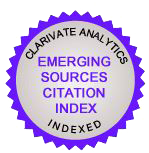La adaptación cinematográfica de Harry Potter y la piedra filosofal: el equilibrio entre filtrar y mostrar
DOI:
https://doi.org/10.30827/impossibilia.vi24.25246Palabras clave:
Harry Potter, Chris Columbus, J. K. Rowling, adaptación, película, novela, mundo mágicoResumen
En 2001 Chris Columbus adaptó Harry Potter y la piedra filosofal, la opera prima de Joanne Kathleen Rowling para convertirla en la primera película de la saga Harry Potter. Nuestro artículo ofrece un análisis de algunas de las decisiones que se tomaron respecto de la novela para hacer la película, en específico de cómo se trabajó con la trama y con el mundo mágico. Para ello se pone primero en contexto la película y se revisa el concepto de adaptación, de manera que después puede explicarse por qué es importante que Columbus escogiera filtrar unos elementos y mostrar otros, algo que se ejemplifica mediante dos escenas del filme.
Descargas
Citas
Referencias bibliográficas
BLAKE, Andrew. (2002). The Irresistible Rise of Harry Potter. London-New York: Verso.
BOX OFFICE MOJO. (s/f). Harry Potter and the Sorcerer's Stone. https://www.boxofficemojo.com/release/r11416332801/
CHATMAN, Seymour. (1978). Story and Discourse. Narrative Structure in Fiction and Film. Ithaca: Cornell University Press.
CHING VELASCO, Joseph. (2020). You are Cancelled: Virtual Collective Consciuosness and the Emergence of Cancel Culture as Ideological Purging. Rupkatha Journal on Interdisciplinary Studies in Humanities, 12(5), 1-7. Doi: 10.21659/rupkatha.v12n5.rioc1s21n2
DELEYTO, Celestino. (1991). Focalisation in Film Narrative. Atlantis 13(1-2), 159-177.
DELGADO JIMÉNEZ, Ángel; GARCÍA FERRER, Donaldo; & TRUNEAU CASTILLO, Valentina. (2009). Los procesos de significación en la saga Harry Potter de J.K. Rowling. situArte. Revista arbitrada de la Facultad de Arte de la Universidad del Zulia, 2(3), 70-80. https://produccioncientificaluz.org/index.php/situarte/article/view/15951
JAKOBSON, Roman. (1971). Selected Writings vol. 2. Paris: Mouton.
LINDER, Brian. (2000), Chris Columbus to direct Harry Potter. IGN (28 de marzo). https://www.ign.com/articles/2000/03/28/chris-columbus-to-direct-harry-potter
PENNINGTON, John. (2002). From England to Hogwarts, or the Aesthetic Trouble with Harry Potter. The Lion and the Unicorn, 26(1), 78-97. Doi: 10.1353/uni.2002.0008
PÉREZ BOWIE, José Antonio. (ed.) (2010). Reescrituras fílmicas: nuevos territorios de la adaptación. Salamanca: Ediciones Universidad de Salamanca.
PÉREZ, Hernán. (2014). Música de cine. John Williams & Steven Spielberg, Santa Fe: Ediciones UNL.
RAJEWSKY, Irene O. (2005). Intermediality, Intertextuality and Remediation: A Literary Perspective on Intermediality. Intermédialités. Historie et théorie des artes, lettres et des techniques, 6, 43-64. Doi https://doi.org/10.720271005505ar
ROWLING, Joanne Kathleen. (2004). Harry Potter and the Philosopher’s Stone. London: Boomsbury.
ROWLING, Joanne Kathleen. (2011). Harry Potter y la piedra filosofal. Barcelona: Salamandra.
SÁNCHEZ NORIEGA, José Luis. (2004). De la literatura al cine. Barcelona: Paidós.
STAM, Robert (2005). Introduction: The Theory and Practice of Adaptation. En STAM, Robert; & RAENGO, Alessandra. (Eds.). Literature and Film. A Guide to the Theory and Practice of Film Adaptation (pp. 1-54). Malden: Blackwell.
STAM, Robert; Burgoyne, Robert; & Flitterman-Lewis, Sandy (2005). New Vocabularies in Film Semiotics. Structuralism, Post-Structuralism and Beyond. London: Routledge.
Referencias filmográficas
COLUMBUS, Chris. (2001). Harry Potter and the Philosopher’s Stone [Película]. Warner Bros Pictures.














